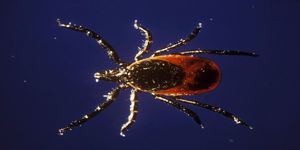Bat-Killing Fungus Spreads to California
Bats are an essential part of any ecosystem because they help keep irritating pests, such as mosquitoes, at bay. Unfortunately, a bat-killing fungus appears to be spreading like wildfire across the contiguous United States, and as you might come to expect, it’s raising some serious red flags in the world of animal conservation.
Image Credit: Pixabay
This particular fungus, named Pseudogymnoascus destrucans, first manifested in New York almost ten years ago, and it’s been moving Westward ever since. It causes a lethal disease in American bats known to science as white-nose syndrome, and alarmingly, at least four bats from Northern California have been diagnosed with similar symptoms in recent memory.
"We all thought we were going to have more time before it got this far west," explained UC Santa Cruz biologist Winifred Frick, who also happens to be a scientist for a conservation group called Bat Conservation International. "We should all be very concerned about this heartbreaking discovery."
Related: How moths avoid being eaten by bats
The fungus appeared seemingly out of nowhere and began spreading like wildfire, leaving bats with virtually no time at all to develop an immunity against it. With that in mind, most American bat species are susceptible to the disease, including endangered species, and this puts many of them at risk of extinction unless something can be done to prevent it.
For whatever reason, bats seem to congregate in smaller numbers on the West coast than they do on the East, and this could slow down the spread of the disease from Northern to Southern California. Still, conservationists are alarmed about the situation, and rightfully so, as it could leave a dent in America’s bat population numbers.
"We know the losses of bats in the West will be less conspicuous than in the Northeast, where thousands of dead bats are spilling out of cold, dark caves and across the countryside," elucidated Jeremy Coleman from the U.S. Fish and Wildlife Service (FWS). "Beyond that, however, there are a lot of critical unknowns. For instance, we don't know exactly where bats in California hang out, or how the disease will ultimately manifest in the state's warmer climate."
Related: Bats may hold the secret to longevity
Scientists knew it was only a matter of time before the fungus made it to the West coast, but they assumed they still had time to research possible mitigations, such as fungicides and vaccines, before it ever got there. Sadly, it looks like it could be too late, and those scientists are now scrambling to find a solution.
Given the urgency of the situation, it should be interesting to see how experts will respond to the fungus’ emergence on America’s West coast. Developing a viable vaccine could take some time, but it might be the most feasible option.
Source: Phys.org









